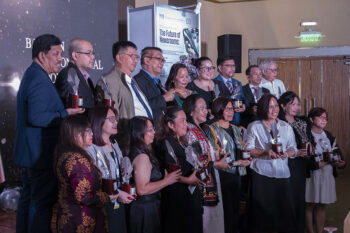The primary targets are children in grade 1, pre-school and day care levels.
Bella Lechonsito, provincial social welfare and development office chief,
said the local government is currently tapping some complementary programs
of different government agencies in order to sustain its goal to alleviate
hunger in rural areas.
“Aside from the distribution of one kilo of rice, there should be
complementary programs such as nutrition and livelihood,” Lechonsito said.
The program is being implemented in the fourth class municipalities of Sto.
Nino, Tantangan and Tampakan.
FSP is pursuant to President Gloria Macapagal-Arroyo’ s instruction to
intensify efforts in addressing hunger among poor schoolchildren and their
families, especially those in the remote areas.
“It is a form of food subsidy for young learners who belong to poor
families,” a program briefer cited.
Under the program, the beneficiaries would be provided with daily rations of
a kilo of rice for a limited period of time.
“As long as the child goes to school or day care center, the family is
assured of rice on its table every day, which will eventually contribute to
the improvement of their nutritional status,” it said.
The beneficiaries are pre-school and grade 1 pupils in the National Capital
Region (NCR), divisions of Sulu and Tawi- Tawi in the Autonomous Region in
Muslim Mindanao and selected public elementary schools in 49 provinces.
The 49 provinces were categorized according to severity of food insecurity
and vulnerability to hunger as indicated by the Information Mapping System.
The results of the quarterly self-rated hunger survey conducted by the
Social Weather Station reflect an increasing incidence of hunger in the
country.
The first quarter 2006 results revealed that 16.9 percent of Filipino
families experience hunger, with nothing to eat at least once in the
previous three months.
The results showed that hunger was highest in Mindanao at 21 percent, NCR at
18.3 percent, Visayas at 16 percent and Luzon at 14.7 percent.
Compared to the last quarter of 2005, the incidence of severe hunger, which
refer to families who experienced hunger often or always in the last three
months increased from 3.9 percent to 4.2 percent affecting an estimated
700,000 families.
